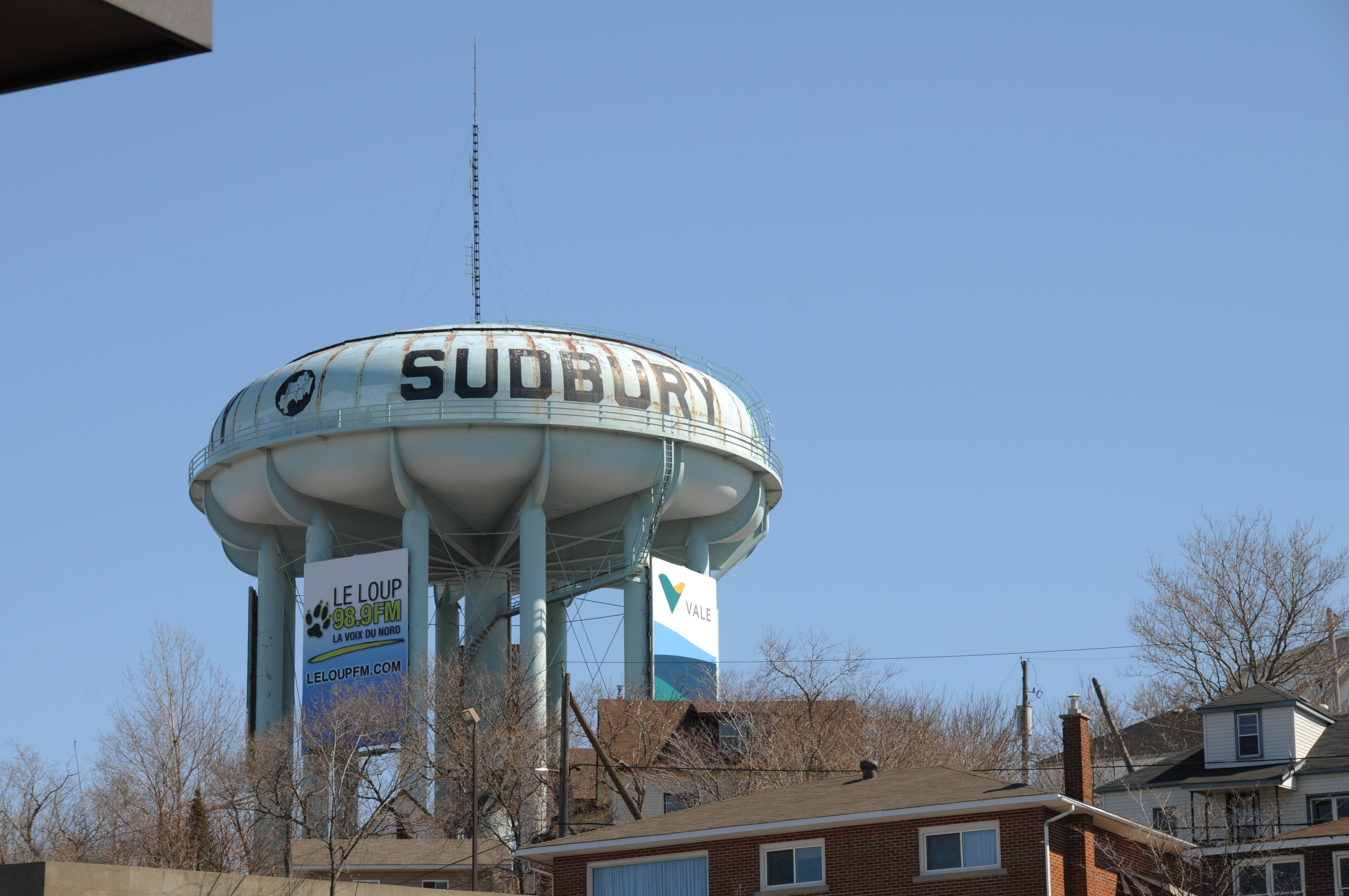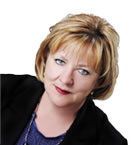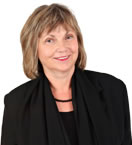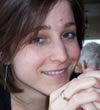
In 2017 the National Hockey League (NHL) is celebrating its centennial. Over the past 100 years, a legion of players born and raised in the communities which make up City of Greater Sudbury have played in the big leagues..
Sudbury has contributed more than 70 players to the NHL and many more to the major miners. Hundreds, maybe thousands, of young Sudbury athletes, have head south on hockey scholarships in the United States. Native sons and daughter have played hockey for Team Canada.
The city is known as a breeding ground for NHL players. There is hardly any celebration of this fact anywhere in the city.
When you go to Parry Sound, there are several large signs and a one museum that pays tribute to its most famous son, former Boston Bruin Bobby Orr.
It is time for the city to erect a welcoming sign that says Greater Sudbury, breeding ground for the NHL.
Here are some of NHL players with Sudbury connections.
Al Arbour, Hall of Famer, born in 1932, played in the NHL from 1949 to 1971 (Detroit Red Wings, Chicago Black Hawks, Toronto Maple Leafs and St. Louis Blues). Arbour coached from 1970 to 2008 (New York Islanders and St. Louis Blues) He died in Florida in 2015.
Named “The Chief” because of his native heritage, George Armstrong was born in Skead in 1930. He is the longest serving captain in the Toronto Maple Leaf’s history. In 1975 George Armstrong was inducted into the Hockey Hall of Fame and his No. 10 jersey retired in 1997-98. Armstrong spent most of his childhood in Falconbridge where he practised his hockey skills on the local rinks. Armstrong was over six-feet tall, and was very intimidating by age 16 when he was playing with the Copper Cliff Redmen of the NOHA, along with future Maple Leaf’s teammate Tim Horton. Armstrong soon attracted the attention of NHL scouts. He played 21 seasons with the Leafs. Armstrong accepted the Stanley Cup with his team for the fourth and final time in his career before retiring on April 4, 1971. The Leafs have not won a Stanley Cup since.
Larry Aurie played 11 seasons in the NHL for Detroit Cougars. He was born in Sudbury in 1905 and died in Detroit in 1952.
John George Baby Jr. played defence two seasons in the NHL for the Cleveland Barons and Minnesota North Stars. Born in Sudbury in 1957. Baby played junior hockey with the Wolves and finished his career in the International Hockey League. His father John Sr. was a member of the Wolves when they won the Allan Cup in 1954.
Todd Bertuzzi was born in Sudbury on Feb. 2, 1975 and played for the Sudbury Wolf Cubs in the OMHA and NOJHA. In 1991 he was drafted to the Guelph Storm, where he played four seasons before beginning his professional hockey career with the New York Islanders in 1995. He has played with the Vancouver Canucks, the Florida Panthers, the Detroit Red Wings and the Anaheim Ducks. Bertuzzi was selected to play on the Canadian national men’s hockey team at the 2006 Winter Olympic Games in Turin, Italy.
Hector “Toe” Blake was best known for his tough but fair coaching style. Blake was born in the small town of Victoria Mines on Aug. 21, 1912 and was raised playing outdoor hockey in Coniston. His sister was unable to pronounce his name, and when she did it sounded like Hec-toe, hence Toe became his nickname. Blake played with the lengendary 1932 Memorial Cup Champion Sudbury Cub Wolves coached by Max Silverman. He joined the Montreal Canadiens in 1935. He retired in 1948. In his last eight seasons, he was captain and led the Canadiens to Stanley Cups in 1944 and 1946. In 1938-39, he won the Hart Trophy as the NHL’s most valuable player and the Art Ross Trophy as scoring champion. He retired from playing hockey after he suffered a double fracture of his ankle that ended his NHL career. Despite the injury, he was ranked 66 in The Hockey News’ 100 greatest players in 1998. Blake went on to coach the Montreal Canadians to eight Stanley Cup victories. Blake was inducted into the Hockey Hall of Fame in 1966, and he received the Order of Canada in 1982. Blake, who had Alzheimer’s disease, died on May 17, 1995 of pneumonia at age 82.
Cumming “Cummy” Burton was born in Sudbury on May 12, 1936. He played professionally with the Detroit Red Wings. As well he was a sports announcer and commentator on CKSO radio and television. He also wrote a popular sports column for Northern Life.
Fred Boimistruck grew up in Capreol. He was drafted by Toronto Maple Leafs in 1980 and played two seasons before being sent to the minors. The defence player retired from hockey when he was 25 and became a locomotive engineer with CN. Boimistruck was part of a Cornwall Royals junior club that won Memorial Cup championships in 1980 and 1981.
Andrew Brunette, from Valley East, played much of his minor hockey career with the Rayside-Balfour Sabrecats of the NOHA. He played with the Owen Sound Platters and was a Washington Capitals draft pick. He skated 1,100-plus-game in the NHL with Washington, Nashville Predators, Atlanta Thrashers, Minnesota Wild and Colorado Avalanche. After knee-surgery, he played his last season with Chicago Blackhawks. In 2013, Brunette announced his retirement. He was assistant coach with the Minnesota Wild and now works in the team’s front office.
Bryan Albert Campbell (born 1944) played 260 games in theNHLand 433 games in theWHA. He played for theLos Angeles Kings,Chicago Black Hawks,Vancouver Blazers,Cincinnati Stingers,Indianapolis Racers, andEdmonton Oilers.
Wayne Carleton (born 1946) played in the NHL andWHA in the 1960s and 1970s. He was a member of the 1970 Boston Bruins Stanley Cup champions.’
Although he never won a Stanley Cup as a player, Randy Carlyle coached the Anaheim Ducks to a Stanley Cup victory in 2006-07 after being named head coach in 2005. Carlyle was born in Sudbury in 1956. He played hockey with the Chelmsford Canadiens in the NOJHA in 1973-74, and the Sudbury Wolves in the OHA-Jr., followed by two seasons with the Sudbury Wolves in the OMJHL. The Toronto Maple Leafs had their eye on Carlyle while he was playing junior hockey, and they selected him 30th overall in the 1976 draft. Carlyle retired from playing in 1993 after playing 17 seasons with Toronto, Pittsburg and Winnipeg. He began a coaching and management career with the Winnipeg Jets, Washington Capitals and Manitoba Moose.
Robert Arthur Cook, born in 1946, played with Vancouver, Detroit, New York Islanders and Minnesota. He began his OHL career with the London Nationals and finished his career in 1976 with the London Knights of CSAHL. He died in 1978 at the age of 32 in London.
D’Arcy Coulson is the son of the original owner of the Coulson Hotel. In 1930 the defenceman played one season in the NHL for the Philadelphia Quakers. After hockey, he made a fortune in the hotel industry and owned a golf course. He died in 1996.
Terry Crisp”Crispy” was born in Parry Sound in 1943 and grew up in Capreol. Crisp is a retired professional hockey player and coach in the NHL. Upon his retirement, he became a sports broadcaster with TSN, Fox Sports, and colour analyst for the Nashville Predators. He currently lives in Nashville. Crisp played with the St. Louis Blues and helped the club win three consecutive Stanley Cups. He also played with the Philadelphia Flyers when the team won the Stanley Cup in 1974. As a coach, he led the Sault Ste. Marie Greyhounds to an undefeated season at home in 1985. The club finished first in the OHL that year with 54 wins, 11 losses and one tie and advanced to the Memorial Cup where they came up short, losing to Prince Albert. Following his success in the junior ranks, Crisp was named head coach of the Calgary Flames in 1989 after defeating the Canadiens. Crisp later became coach of the Tampa Bay Lightning from 1992 to 1997.
Gary Croteau, (born 1946), played most of his pro career with the Colorado Rockies. He played university hockey in the USA and was signed as a free agent by theMaple Leafs in 1968, then traded to the Los Angeles Kings. He scored five goals in 11 games with the Kings during playoffs. After a couple more trades, he landed in Denver with the Colorado Rockies in 1976. His best season was in 1977, when he scored 24 goals and 27 assists. After an injury in 1980, Croteau retired from hockey and works as a financial broker in Denver.
Troy Crowder was born 1968 in Walden. He earned a reputation as an enforcer before he was drafted into the NHL in 1986. He compiled 433 career penalty minutes in 150 games. He played parts of seven seasons in with the New Jersey Devils, Detroit Red Wings, Los Angeles Kings, and Vancouver Canucks. For two seasons, Crowder was the Calgary Flames player development coach, and he is now president of True Stride Inc., a company that designs skate boots.
Marc D’Amour was born in Sudbury in 1961. The goaltender played junior hockey in Sault. Ste. Marie. He signed a contract with the Calgary Flames in 1982 and played 16 games for the Flamesand later the Philadelphia Flyers. He spend the rest of his career in the minors and retired in 1992.
Joffre Wilfred Desilets (April 16, 1915 – November 30, 1994) was a professional ice hockey player who played 192 games in the National Hockey League. He played with the Montreal Canadiens and Chicago Black Hawks. He was born in Capreol, Ontario.
Ron Duguay, born in 1957, played minor hockey in the Valley East Minor Hockey Association and was drafted by the Wolves in 1974. Duguay scored 274 goals and 620 points in 860 career NHL games. He was the New York Rangers second choice in the 1977 amateur draft. He also played for Detroit, Pittsburgh and Los Angeles. After 12 NHL seasons, Duguay moved Germany to play hockey. The following season, he played the IHL with the San Diego Gulls for two seasons. In 1992, he made a NHL comeback with the Tampa Bay Lightning but he was injured. He retired from hockey in 1999 after almost a decade in the minors .His good looks and penchant for models made Duguay a celebrity player. In 2009, Duguay competed on the Battle of the Blades skating competition on CBC Television, partnered with Barbara Underhill. Duguay joined MSG Networks in 2007 and currently serves as a hockey analyst for MSG’s coverage of the New York Rangers.
Craig Duncanson grew up in Walden and played junior hockey with the Wolves. The left winger was drafted in the first round by theLos Angeles Kingsin1985. During his career, he played for the Kings, Winnipeg Jets and New York RangersDuncanson now his head coach of the Laurentian University Voyaguers.
John Flesch (born 1953) played the 1971-72 season with the Wolves and the next year played for 28 Lake Superior State University then was chosen 69th He.was drafted by the Atlanta Flames in 1973. He played 124 NHL games with the Minnesota North Stars, Pittsburgh Penguins, and Colorado Rockies.Jack Egers (born 1949) was drafted in 1966 by the New York Rangers. He also also played for St. Louis and Washington. He played OHA in Kitchener. When he retired from playing, he returned to Kitchener and coached Junior B hockey. He retired from the Kitchener Fire Department in 2009
Robert Douglas Fitchner (born Dec. 22, 1950) is a retired professional ice hockey player who played 414 games in the World Hockey Association and 8 games in the National Hockey League. He played for the Indianapolis Racers, Quebec Nordiques, and Edmonton Oilers.
Mike Foligno played his entire minor and junior career in his hometown. He became a scoring sensation with the Sudbury Wolves (OHA). He was selected in the 1st round, 3rd overall in 1979 by Detroit and Mike played 2½ seasons in Detroit before he was traded to Buffalo. And it was in Buffalo that Mike achieved the greatest success. He stayed there for 10-seasons and was extremely popular. Mike was traded to Toronto late in 1990 when it was felt he was near the end of his career. He ended his career in 1993-94 after playing most of the season in sunny Florida for the Panthers. While playing in Florida he surpassed the magical 1000 game mark, something that further underlines the fact that he had a very successful NHL career although a Cup win eluded him. He returned to coaching and scouting after his playing days were over.
David Fortier (born 1951) played minor hockey in Garson and won the NOJHL Best Defenceman Award with Chelmsford in 1969-70. Fortier appeared in 205 NHL games with the Leafs, the Islanders and the Canucks, scoring eight goals and 21 assists for 29 points along with 335 penalty minutes. He also appeared in 20 playoff games, recording two assists and 33 penalty minutes. After retiring, he became a Sudbury firefighter.
Mike Gillis (born 1958) played with the Colorado Rockies and Boston Bruins. After retiring from the game, he studied law and became a player agent. In 2008, he became general manager of the Canucks. He was controversial in Vancouver and left his post in 2014. He teaches sports law at the University of Victoria.
Sean Gauthier (born 1971) played junior hockey in Kingston. The goalie played r one game in the NHL for the San Jose Sharksin1998–99. Drafted by theWinnipeg Jets in 1991, he played in the minor pro leagues and four year stint in Sweden.
Ed Giacomin, born in Sudbury in 1939, was one of the most successful goalies ever to wear the uniform of the New York Rangers. He played over 500 of his 610 regular season games with the Rangers and helped the team reach the Stanley Cup final in 1972. He was placed on the NHL First All-Star Team twice and the Second Team three times. He grew up in Gatchell. Tragedy struck Giacomin as a teenager when a kitchen stove blew up in his face and caused second- and third-degree burns on his legs and feet. He underwent skin grafts and his legs were bandaged for a year. Doctors told him to forget about hockey, but Giacomin was more determined than ever. After leaving the game in 1878, Giacomin worked as an assistant coach with the Islanders and the Red Wings. He spent the 1979 season as a broadcaster for the New York Islanders, and and spent two seasons with the Rangers as a goaltending coach.He was inducted into the Hockey Hall of Fame in 1987.
Wilfred “Shorty” Green was born in Sudbury in 1896. His hockey career began when he graduated from Sudbury High School and joined the Northern Ontario senior title winning team in 1915. He played in the finals for the Allen Cup with the 27th Battalion team in 1917. Green later spent 30 months in the army during the First World War, and was discharged from military service in December 1918. He returned to hockey, winning the 1919 Allen Cup with the Hamilton Tigers prior to returning home to play with Sudbury Wolves of the Northern Ontario Hockey Association. He turned professional in 1923 with the Hamilton Tigers and was captain of the team when they went on strike for more money in 1925 prior to the playoffs. In 1925-26 the Hamilton Tigers moved to New York to become the New York Americans. Green played on the “Tiger Line” with former Tiger Billy Bunch and his brother Red Green. Green would score the first goal in the new Madison Square Gardens. Green retired from playing hockey in 1927 and coached the Americans during the 1927-28 season before becoming coach of the Duluth Hornets of the American Hockey Association for the 1928-29 season. He played three games with the Hornets over two seasons and returned sporadically to active military service. Green played his last game in Tulsa in 1931-32 when he was forced to hang up his skates after a serious kidney injury. Green died in 1960 and was inducted into the Hockey Hall of Fame in 1962.
Red Green (born 1899) was a left winger who played six seasons in the NHL for Hamilton Tigers, New York Americans and Boston Bruins.
Dave Hannan from Onaping Falls, played junior hockey in Windsor, Sault Ste. Marie and Brantford. The left winger was drafted in 1981 by the Pittsburgh Penguins. His best statistical season was 1985–86 when he recorded 35 points in 75 games. He also played for Buffalo, Edmonton Toronto. Colorado and Ottawa. He also played on Team Canada which one an Olympic Silver Medal in 1992. He played on Edmonton (1988) and Colorado (1996) when those team won the Stanley Cup. He final season was in Ottawa in 1997.
George “Shorty” Horne (June 27, 1904 in Sudbury) was a professional ice hockey right winger who played three seasons in the National Hockey League from 1925 to 1929 for the Montreal Maroons and Toronto Maple Leafs. In 54 career NHL games, he scored nine goals and assisted on three for twelve points. He won a Stanley Cup with the Maroons in 1926. George’s name was left off the Stanley Cup, because he did not play in the playoffs. Horne died in the off-season in 1929 when he drowned while on a canoe with some friends.
Joe Ironstone was born in Montreal in 1898 but he grew up in Northern Ontario and played in the NOHA with the Sudbury Wolves in the early 1920s. He played goal in just two games in the NHL, one with the New York Americans during the 1925-26 season and one with the Toronto Maple Leafs in 1927-28. The balance of Ironstone’s hockey playing days were spent with such teams as the Niagara Falls Cataracts, London Panthers and Kitchener Dutchmen of the CPHL. He retired from active competition in 1936 after playing for Falconbridge and Sudbury of the NOHA. Ironstone returned to the family business in Sudbury, a men’s wear store started by his father in 1896. In sports, he was an original member of the Sudbury Granite Club and an active curler. He died in 1972 in Sudbury at the age of 74. Ironstone, a goalie, was the second Jewish player ever signed by a NHL team and the second to appear in a NHL game. He signed with the Ottawa Senators on Oct. 30, 1924, 10 days after Sam Rothschild signed with the Montreal Maroons.
Ryan Johnston (born 1992) is the younger brother of Olympic gold medalist and Canadian National Team member Rebecca Johnston. He was signed in 2015 to a two-year, two-way contract with the Canadiens. Johnston played for the Sudbury Nickel Capital Wolves midget team that captured the 2008 TELUS Cup championship. He went on to a successful career in hockey at Colgate University in New York State before signing with Montreal. He played mostly for the AHL’s St. John’s ice Caps but made his NHL debut in three late season games with Montreal in last season and played seven games with the Habs in the current season.
_________________________________________________________________________
Yvon Labre (born 1949) played for junior hockey for the Toronto Marlboros. He was drafted by Pittsburgh and played 37 games for the Penguins before being selected by the Washington Capitals in the 1974 expansion draft. A hard-nosed defenceman, Labre was team captain from 1976 to 1978. He remained in the Capitals organization after his playing career ended. At various times since his retirement, he has served as an assistant coach, colour commentator, scout and the director of community relations for the Capitals. Labre’s jersey number (#7) was retired by the Capitals in 1981. He lives in Baltimore, Maryland and is the owner of a financial services company.
Yvon Labre
Status: Former NHL defensman (1970-1981) for Washington Capitals and Pittsburgh Penguins.
Ht: 5-foot-11 Wt: 190 pounds
DOB: Nov. 29, 1949 In: Sudbury, Ont.
First Hockey Memory: “Oh my God…that would be in my hometown of Sudbury, when we’d play on any frozen area – the lot across the street, or walk a few blocks to the frozen river. We’d find places on the frozen river where we could play. This was when I was nine or 10, before the outdoor rinks were put up. I never got to play indoors until I was 14 or 15.”
Hockey Inspiration(s): “Gordie Howe. I liked to watch Bobby Orr. There was only six teams back then.”
First Famous Hockey Player You Met Or Encountered: “Getting an autograph from Maurice Richard when he played an exhibition in Sudbury. That was way back in 1963. We each got a stick and he signed his autograph on the stick for us. We were in awe.”
Greatest Sports Moment: “That would have been when they retired my number at the Cap Center in 1981. I was with the Washington Capitals organization for 26 years.”
Most Painful Moment: “That would have been my first year with the Washington Capitals. We only won one game on the road. We didn’t win many games. As down as we were, I remember Ottawa broke one of our records and a reporter called me and asked how I felt about it. I told him, facetiously, I was happy to not be associated with those losses. Then the Capitals made the Stanley Cup final the first year they moved to the new arena MCI Center. Now they sell out every night. I hope they can win the Stanley Cup.”
Most Memorable Goal: “I only had 14. So I can maybe remember them all. My first one was against Tony Esposito in Pittsburgh. I remember another one when Jimmy Rutherford came out, way out and I made the big turn and he was out for lunch, so it was like an empty net for me. It came easy that time. Jimmy probably wouldn’t remember it. When I came back to the bench, my teammates said, ‘Where did you get that one?’”
Funniest Players Encountered: “So many of them. I can’t even think of one off the bat…Joe Reekie had to be one of the funniest I ever met. He was just always joking. When you spoke with him you could never get a straight answer.”
Closest Hockey Friend(s): “Ronnie Lalonde, he came from Pittsburgh. He said he felt sorry for me playing in Washington. Then a week later he was playing with us. He’s still a good friend. We go fishing in the summers, for a long, long time.”
Fiercest Competitors Encountered: “I would say playing against Bobby Orr in Boston. Playing in Philadelphia and having to fight your way out of the building all the time. All the good players. They’re all tough to play against. At that time it was Orr, Guy Lafleur. Montreal would play very hard. Playing against Gary Dornhoefer was no picnic. Him and I would hit each other like crazy.”
Embarrassing Hockey Memory: “If a goal went in off you. That happens all the time with the game nowadays. My first year in Metro Junior B I won Best Defenseman of the year and I scored three goals for the opposition and one for my team (laughs).”
Favorite Arenas To Play: “I used to love playing in Toronto and Montreal. Let’s face it, they are the Meccas of hockey, as far as I’m concerned. Still.”
Favorite Uniforms: “Nowadays, of all the teams…I’m partial to the Capitals. And of course when they go back to the old retros. I think Chicago has a nice uniform. I like the new Capitals jersey.”
Strangest Game(s): “One of our first games in Washington they had the ice show in town. They had to shave the ice down. They didn’t have enough time. The New York Rangers and we showed up to play at 8:00, but we didn’t start till around 9:00. Another time we played Detroit and had a donnybrook on ice. They brought out the Zamboni and played God Bless America before we finished the second period, with about 2:30 left. Then we came out and finished the second, changed ends and played the third period. That was unusual. One time on Long Island there was fog, it was spring time. The lights went out in the game while we were skating around. I was yelling, ‘Alex!’ in the dark. The referee said, ‘Alex who?’ What are you saying?’ I said, ‘Alex-trician. We need an electrician (laughs).’”
Favorite Sport Outside Hockey: “I still like golf, but I don’t play much with all my injuries. I liked tennis when I could still move, but I haven’t put a racquet in my hand in 10, 15 years. I like American football.”
Worst Injury: “My knees. I had two knee operations. That pretty much ended my career. Now I’m debating to get an artificial knee or just suffer. I can remember the pain from the surgery.”
Personality Qualities Most Admired: “People who are humble, that don’t let things go to their head. That don’t think they’re bigger than the game. Hard workers. You can have all the talent. But the talent has to work hard also.”
________________________________________________________________________
Marc Laforge (born 1968 in Sudbury) a defenceman, was drafted in the second round, 32nd overall, by the Hartford Whalers in the 1986 NHL Entry Draft. He played nine games with the Whalers in the 1989–90 season before they traded him to the Edmonton Oilers in March 1990. He played five games with the Oilers during the 1993–94 season.
Enforcer Laforge played for the Sudbury Wolves for the 1987–88 OHL season. Fourteen games into the season, Laforge was involved a postgame brawl with the Guelph Platers. Laforge attacked eight different Platers while they were involved in other fights, and he was also accused of driving Plater goaltender Andy Helmuth’s head into the ice. Laforge was given a two-year suspension from the league (the equivalent of a lifetime ban for a 19-year-old in a league with an age limit of 21) for his actions, ending his career as a junior player.[2] Laforge later referred to the incident as “the dumbest thing I’ve ever done.”[3]
Laforge amassed over 3,000 penalty minutes in his professional hockey career.
Kevin LaVallee
Dave Lowry
Derek Mackenzie
Troy Mallette
Bernie MacNeil
Douglas Allen “Diesel” Mohns was born in Capreol in 1933. By age 14 he was one of the most valuable players and an outstanding junior. He was scouted by the Boston Bruins and offered an opportunity to attend a training camp with their Barrie Flyers team. During his junior career with the Barrie Flyers of the OHA, he enjoyed two Memorial Cup victories in 1951 and 1953. Mohns spent nine seasons with the Boston Bruins before the fan favourite was traded to the Chicago Blackhawks in 1964-65. He also played for Toronto, Detroit, St. Louis, Minnesota, Atlanta and Washington for a total of 22 seasons. Mohns played a total of 1,390 NHL career games scoring 248 goals, 462 assists, and 710 points in addition to 1,250 penalty minutes.
Art Ross was born in Naughton when it was still a Hudson Bay Company post. He was named coach of the Boston Bruins in their inaugural season(1924-25), and won three Stanley Cups with them before moving into the general manager’s chair. In 1945, the Hockey Hall of Fame named its 12 chartered honourees, and Ross was one of them. He is credited for being the first to promote the use of synthetic rubber pucks. He also invented the modern B-shaped goal net which cuts down on dangerous rebounds.
Eddie Shack was born in Sudbury on Feb. 11, 1937. His parents were Ukrainian immigrants. Shack began to play junior hockey at age 15, playing for the Guelph Biltmores in the OHA. His best season was in 1956-57, when he led the league in assists and starred in the Memorial Cup playoffs. He was signed by the New York Rangers in 1959 after playing half a season for the farm team, the AHL Providence Reds. In November 1961, he was traded to the Toronto Maple Leafs where he would play five seasons. Although he did not score many goals, he was a popular and colourful left winger. In 1966, he scored a record high 26 goals and a novelty song was written about about him.Clear the Track, Here Comes Shack reached No. 1 on the pop charts. Shack scored his famous Stanley Cup winning goal off his backside for the Leafs in 1963. The Leafs also won the cup in 1964 and 1967 with Shack’s help. Shack was traded to the Boston Bruins in 1967, and would spend the next four seasons moving between the Los Angeles Kings and the Buffalo Sabres, until the Pittsburgh Pirates sold him back to Toronto in 1974. He retired in 1975. Today Shack is an advocate for literacy programs after revealing he was illiterate for most of his life.
Dave Taylor was born in Levack in 1955 and began his hockey career with the Levack Huskies in the NOJHA during the 1973-74 season. He played hockey while attending Clarkson University in Potsdam, New York, and was selected 210th by the Los Angeles Kings in the 1975 Amateur Draft. Taylor burst onto the NHL scene with a 22 goal performance during the 1977-78 season and exploded a year later with 43 goals. The following year, he formed the “Triple Crown Line” with Marcel Dionne and Charlie Simmer. In 1980-81 he registered 47 goals and 112 points and was placed on the second NHL Second-All Star Team. From 1983 to 1986, Taylor represented Canada at three world championships. Taylor registered his 1,000th point in the NHL on Feb. 15, 1991 at the Philadelphia Spectrum. He was also presented with the Bill Masterton and King Clancy awardsfor his community involvement, working tirelessly for the Kings as community/player relations director and charities such as the Juvenile Diabetes Research Foundation. He finally reached the Stanley Cup finals in his 16th season in the NHL. The Kings lost to the Montreal Canadiens. He retired from the Kings in 1994. Taylor eventually took on a position in administration and was named the Kings’ vice president and general manager on April 22, 1997. Just one day after the end of the 2006 season, he was relieved of his duties as general manager.
During the 1930s, Copper Cliff was one of the only three towns across Ontario that had an indoor rink. Jerry Toppazzini, his brother, Zellio, Tim Horton, Tod Sloan and George Armstrong were all huddled together under that one roof, raising the level of each other’s play. Toppazzini joined the NHL in 1952, putting in short stops with the Bruins, Blackhawks and Red Wings before settling in with the Bruins again for the core of his career. Topper earned his stripes as a hard-driving winger who could kill penalties and score goals. In 1957-58, he set, what was at the time, an NHL record, scoring seven short-handed goals in one season. Toppazzini remained with the Bruins until 1964 before rounding out his on-ice career with the Pittsburgh Hornets of the AHL, the Los Angeles Blades of the WHL and the Port Huron Flags of the IHL. Upon retirement, he coached in Port Huron, Springfield and Sudbury where he was named the OHL’s Coach of the Year in 1976. He purchased the Beef ‘N Bird on Lorne St. in the 1970s. It continues to be owned and operated by the Toppazzini family.
.











